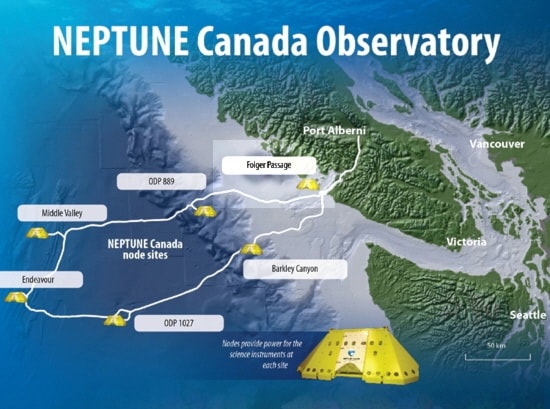Just because a large tsunami didn't pour into Port Alberni doesn't mean there wasn't tsunami activity in the inlet.
NEPTUNE Canada’s sensor equipment deployed in Folger Passage at the mouth of Barkley Sound detected significant water pressure and seismic activity at 9:47 p.m., ocean dynamic specialist Steve Mihaly said.

“The bottom pressure recorder picked up a 10 to 20 centimetre high wave when it passed through,” Mihaly said.”There was likely some signature of it in Port Alberni but it was after dark and no one may have noticed.”
The signals were triggered by wave activity resulting from a 7.7 magnitude earthquake that struck Haida Gwaii at 8:07 p.m. The quake was located 139 kilometres south of Masset
The sensors measure bottom pressure and seismic data. In the graphic shown, the top schematic indicates changes in sea level at Folger Passage when the earthquake occurred. The lower plot measured seismic activity that indicates the onset of an earthquake.
A wave isn't necessarily big when it is out in the deep water. Instead, it is often long to start, then steepens and rises as it slows, he said.
NEPTUNE's sensors in other area picked up a larger wave when it was further out in the ocean, Mihaly said. “It was going faster offshore because it was in deeper water. But it slowed down and decreased in size as it got nearer to Folger Pass.”
The wave wasn't a “pure wave” when it arrived, Mihaly said. “By the time it got down here it reflected and bounced around a bit,” he said.
The sensors record changes in the water pressure and detect variances within millimetres.
Sensor data is transmitted to NEPTUNE's shore station in Port Alberni via fiber optic cable then relayed to the University of Victoria.
Data from Saturday's activity will be gathered then plugged into a model that will generate scenarios about how a tsunami will interact with the West Coast and what could happen in Port Alberni if it hit, Mihaly said.
Last year, NEPTUNE's sensors picked up tsunami activity in Port Alberni after an earthquake measuring 8.9 on the Richter scale struck the north east coast of Japan. And they detected water pressure changes after earthquakes in Samoa in 2009 and Chile in 2010.
